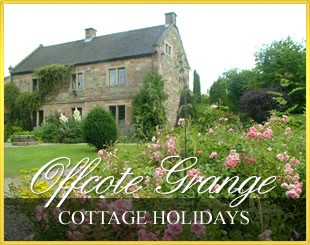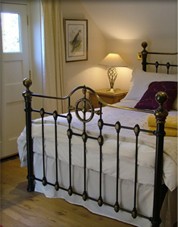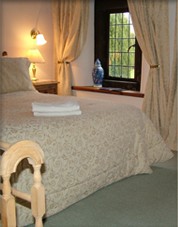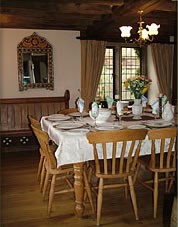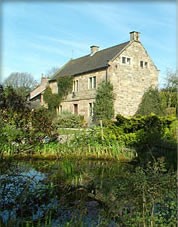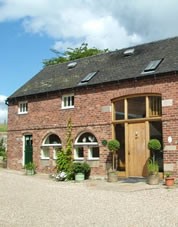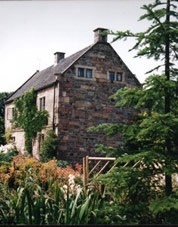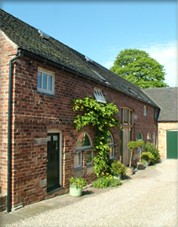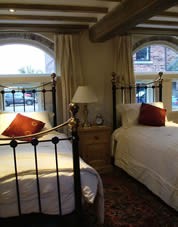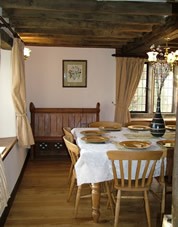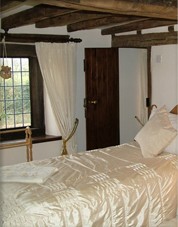 |
The Post Office CottageThe Post Office Cottage 4 Star std, 2 bedrooms (sleeps 4+1) Telephone. 01335 344795 or 0780 8899493 |
Our Cottage
Post Office Cottage is an original Arkwright cottage, dating back to 1776, which lies on the picturesque lane, Scarthin in Cromford village. The cottage is tucked away on a quiet, narrow lane overlooking the tranquil village millpond. The village lies within the Derwent Valley World Heritage Site and on the edge of the Peak District National Park with excellent access to the A6.
The cottage provides a perfect base for exploring the surrounding region. With the added advantage of many interesting places of interest along with all village amenities within two minutes walk of the cottage.
The accommodation comprises of the following:
Living Room
Beamed ceilings and original large stone fireplace welcomes you to our beautiful cottage. Within the living room you will find a LCD TV and DVD player along with a homely coal effect gas stove.
Kitchen & Dining Area
Its modern, fully equipped kitchen adds a 21st Century touch to this period 18th Century setting. To the rear of the kitchen is a light and airy dining area which also houses the washer dryer and central heating boiler.
First Floor
Original style stairs lead from the living room to the first floor landing. The family bathroom is fully tiled with a modern walk in shower. The well proportioned front aspect twin bedroom has views over the village square, Cromford Moor and Black Rocks beyond.
Second Floor
A second flight of stairs leads to the light spacious king size master bedroom giving views of the millpond and surrounding countryside. Room also contains an LCD TV.
Cromford, A Brief History
Although a small village close by to Matlock and Bakewell, Cromford is well known to historians as it is steeped in industrial history and often called the cradle of the industrial revolution.
Prior to 1770, Cromford was little more than a cluster of cottages around an old packhorse bridge and a chapel where travelers gave thanks for a safe journey. All that changed with the arrival of one man, Richard Arkwright.
By 1761 massive machines for carding cotton and spinning jennys were being used. They requires skilled labour and produced an inferior yarn. Arkwright saw his opportunity and with the help of John Key, a clock maker set about the construction of a new spinning machine. With his newly developed machine Arkwright moved to the center of the hosiery industry, Nottingham and with the financial support of wealthy businessmen, Samuel Need and Jedediah Strutt he built a mill. Following developments in harnessing power, Arkwright began to investigate the use of water power, rather than horses. In Derby the River
Derwent was being used as a power source so when Arkwright came across Cromford, with Bonsall Brook and the Cromford Sough– a drainage channel from the nearby lead mines, he knew it was a perfect site for a new mill. Thus together with a ready supply of cheap labour meant that the worlds first successful water powered cotton spinning mill was built in Cromford in 1771. It was so successful he was able to build other mills including Haarlem in Wirksworth and Masson Mill in Matlock Bath.
Initially, communications were a problem, so the Cromford canal was built in the early 1790`s to link up with the Erewash which ran south east to Nottingham.
A turnpike road was opened in 1817 and in the 1830`s, the Cromford and High Peak railway was constructed which linked the Cromford canal to the Peak Forest canal at Whaley Bridge, thus linking the river Trent with the river Mersey.
The original idea was to build a canal but costs involved in cutting through the Derbyshire hills were prohibitive. Many of the inclines on the railway were too steep for trains and wagons had to be pulled by attached chains or wires which were wound along the track by large steam engines at the top of each incline. Only Middleton Top engine remains, having been lovingly restored, and is steamed regularly.
The path of the old railway line is now known as the High Peak Trail and open
to the public for walking and horse riding alike.
Useful Links:
Cromford Today
Cromford is lively, thriving vil-lage containing all the necessities close to hand:
- Three Pubs
- Two Restaurants
- General Store
- Post Office
- Newsagents
- Scarthin Books
- Two chip shops
- Chemist
- Antique shops
- Gift and Clothing shops
Places of Interest in Cromford
- Peak District National Park
- High Peak Trail
- Arkwright Mill
- Matlock Bath & Matlock Town
- Alton Towers
- Carsington water
- Black Rocks
- The National Stone Centre
- Chatsworth House
- Haddon Hall
- Crich Tramway Museum
Photos own and from Cressbrook multimedia and Cromford.

